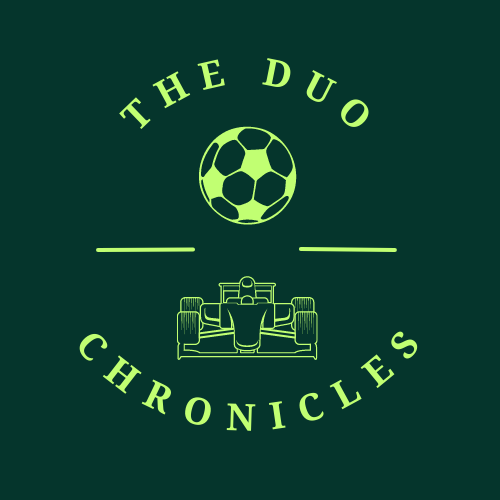Borussia Dortmund: The Yellow Wall of Triumph
Borussia Dortmund's story is one of perseverance, innovation, and devotion. As "The Yellow Wall" continues to stand tall, it ensures that the legacy of this remarkable club will endure for generations to come.

I. Introduction
Borussia Dortmund, often referred to as BVB, is a club deeply entrenched in the fabric of German football. While the team's history and achievements are nothing short of remarkable, it's their passionate and unwavering fan culture, epitomized by the famous "Yellow Wall," that truly sets them apart. The moniker "The Yellow Wall" is more than just a catchy name. It encapsulates the fervor, unity, and vibrancy of Borussia Dortmund's fan base, particularly those who stand and cheer in the colossal South Stand of Signal Iduna Park. This legendary stand, the largest terrace for fans in European football, is an awe-inspiring sea of yellow and black, with over 25,000 dedicated supporters creating an unparalleled atmosphere. It's a place where football transcends the boundaries of sport and becomes a cultural phenomenon.
As we journey through the history of Borussia Dortmund, we'll uncover the club's rise to Bundesliga prominence, iconic moments, legendary players, and the impact they've had on German football. But above all, we'll pay tribute to "The Yellow Wall" and the fans who, with their unwavering passion, have made Borussia Dortmund a symbol of dedication, resilience, and triumph.
II. The Early Days
Borussia Dortmund's storied journey began in 1909 when the club was founded by a group of young football enthusiasts in Dortmund, Germany. In those early years, the club faced its fair share of challenges, both on and off the pitch. World War I interrupted their progress, but it wasn't long before they were back in action. The 1920s marked an era of growth for the club. They gained promotion to the top division of German football and became a fixture in the country's football landscape. However, it wasn't until the mid-1950s that Borussia Dortmund truly started to make their mark. In 1956, they won their first DFB-Pokal, the prestigious German Cup, marking a significant milestone in their history. This victory provided a taste of success that would only whet their appetite for more.
Throughout the following decades, Borussia Dortmund continued to build on this foundation. They secured their first Bundesliga title in 1995, followed by another in 1996, under the stewardship of legendary manager Ottmar Hitzfeld. These titles were crucial in establishing the club as a footballing force to be reckoned with, not only in Germany but also in Europe. The early years may have been filled with challenges, but they also laid the groundwork for the club's rise to greatness. The determination and spirit that marked Borussia Dortmund's formative years continue to be celebrated today by "The Yellow Wall" and fans worldwide.
III. Rise to Bundesliga Prominence
The 1990s marked a period of unprecedented success for Borussia Dortmund, solidifying their status as a Bundesliga powerhouse. Under the astute management of Ottmar Hitzfeld, the club rose to prominence in German football. In the 1994-95 season, Borussia Dortmund clinched their first Bundesliga title in nearly three decades. The team's scintillating performances, led by iconic players like Matthias Sammer and Karl-Heinz Riedle, captured the imagination of football fans across the country. The league triumph also secured their place in the history books.
The following season, Dortmund's meteoric rise continued with another Bundesliga triumph. This back-to-back achievement showcased their consistency and dominance in German football. The team's success was characterized by a blend of youthful talent and experienced campaigners, making them a formidable force. During this era, Borussia Dortmund's fearless attacking style of play, combined with their resolute defense, made them a fan favorite. Players like Andreas Möller, Stefan Reuter, and Jürgen Kohler became iconic figures in the club's history, embodying the spirit of "The Yellow Wall."
These Bundesliga victories not only marked a golden era for Borussia Dortmund but also set the stage for their European conquests. The club's remarkable journey in the UEFA Champions League, including their famous triumph in 1997, further solidified their reputation as a footballing powerhouse and endeared them to fans worldwide.
IV. The Signal Iduna Park Experience
Nestled in the heart of Dortmund, Signal Iduna Park, formerly known as Westfalenstadion, stands as an iconic cathedral of football and serves as the beating heart of Borussia Dortmund. It's here that the true magic of "The Yellow Wall" comes to life. Signal Iduna Park is not merely a stadium; it's an amphitheater where football transcends sport and becomes a visceral, emotional experience. With a capacity that exceeds 81,000 spectators, it ranks among Europe's largest and most electrifying football venues. The sea of yellow and black in the stands forms a breathtaking mosaic, an unbroken wall of passion that extends across the iconic Südtribüne (South Stand).
What truly sets Signal Iduna Park apart is the legendary atmosphere generated by Borussia Dortmund's fervent supporters. Known for their unwavering devotion, fans pack the stadium well before kick-off, creating a visual and auditory spectacle that rivals any in world football. The deafening roars of "You'll Never Walk Alone" before every match send shivers down the spines of players and spectators alike. The "Yellow Wall," or Südtribüne, is the epicenter of this fervor. Comprising 25,000 standing spectators, it's the largest terrace for fans in European football. The synchronized chants, choreographed displays, and thunderous cheers make for an experience that transcends the sport itself. It's a testament to the deep bond between the club and its supporters, a relationship built on shared dreams and unyielding loyalty.
Visiting teams often find themselves overwhelmed by the intensity of Signal Iduna Park. The atmosphere isn't just a part of the game; it's a 12th player for Borussia Dortmund. The stadium's aura has played a pivotal role in the club's successes, as countless opponents have crumbled under the pressure of this unique footballing coliseum. In the world of football, Signal Iduna Park isn't just a stadium; it's a sacred temple of the beautiful game, where passion knows no bounds, and where Borussia Dortmund's spirit truly shines.
V. Klopp's Era: The High Point
The appointment of Jurgen Klopp in 2008 marked a pivotal moment in Borussia Dortmund's history. Little did anyone know that it would ignite an era of unprecedented success and captivating football, ultimately earning the club the moniker of "The Yellow Wall of Triumph." Klopp brought with him a charismatic, gegenpressing style of play that would not only thrill the fans but also revolutionize the Bundesliga. Under his guidance, Borussia Dortmund underwent a remarkable transformation. His philosophy emphasized high-intensity pressing, quick transitions, and a relentless work ethic, traits that endeared him to the passionate supporters.
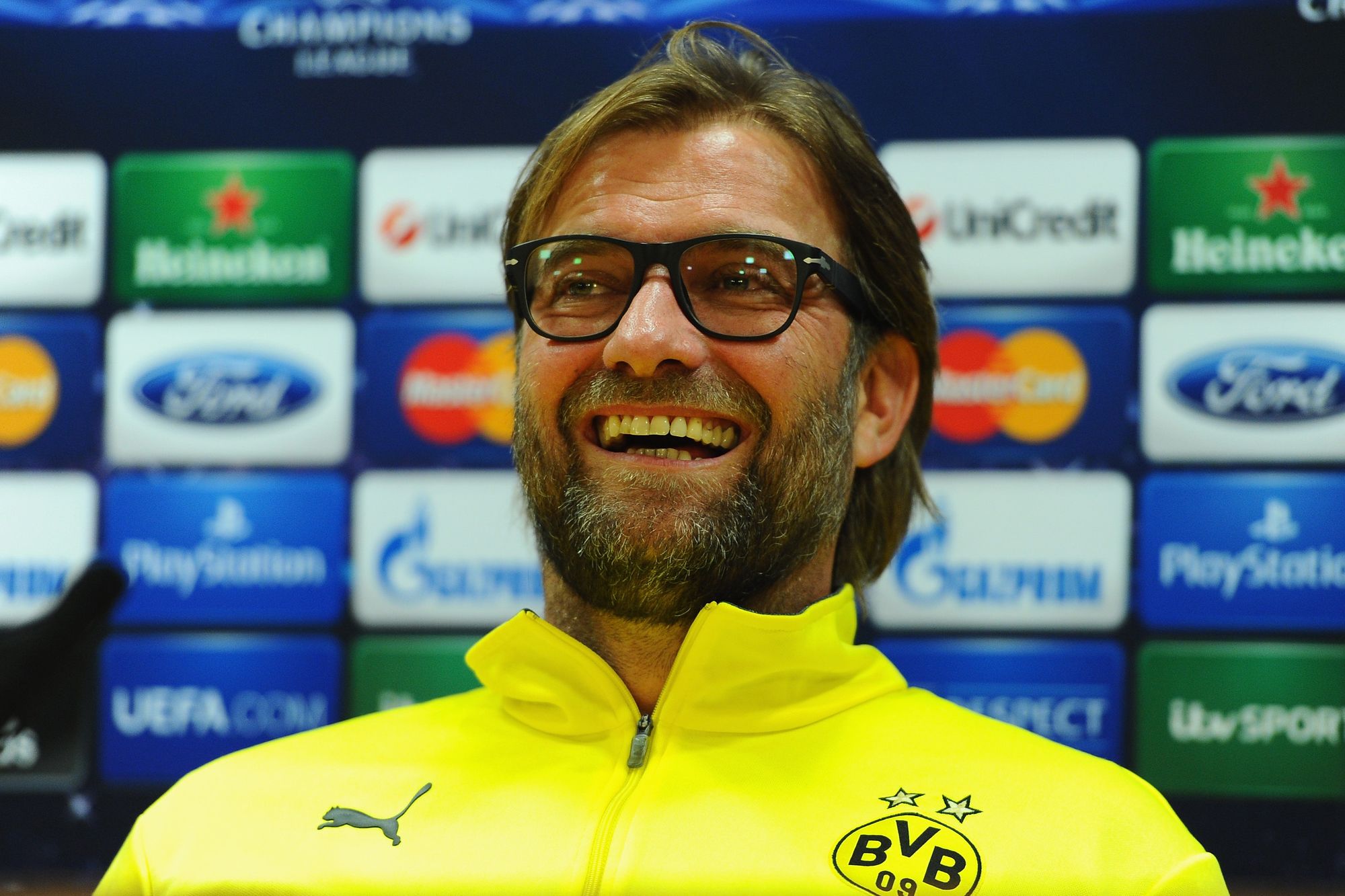
Klopp's first Bundesliga title win in the 2010-2011 season was a watershed moment. The team's breathtaking attacking football, spearheaded by the likes of Robert Lewandowski, Mario Götze, and Shinji Kagawa, left opponents in awe. This was a Dortmund side that not only won matches but did so with flair and exuberance. Klopp had crafted a team that mirrored the energy of the Yellow Wall itself. Over the next few years, Borussia Dortmund's ascent continued. They secured back-to-back Bundesliga titles in 2011 and 2012 and capped off the 2012 season with a memorable DFB-Pokal victory. Yet, it was in Europe where Klopp's influence truly shone.
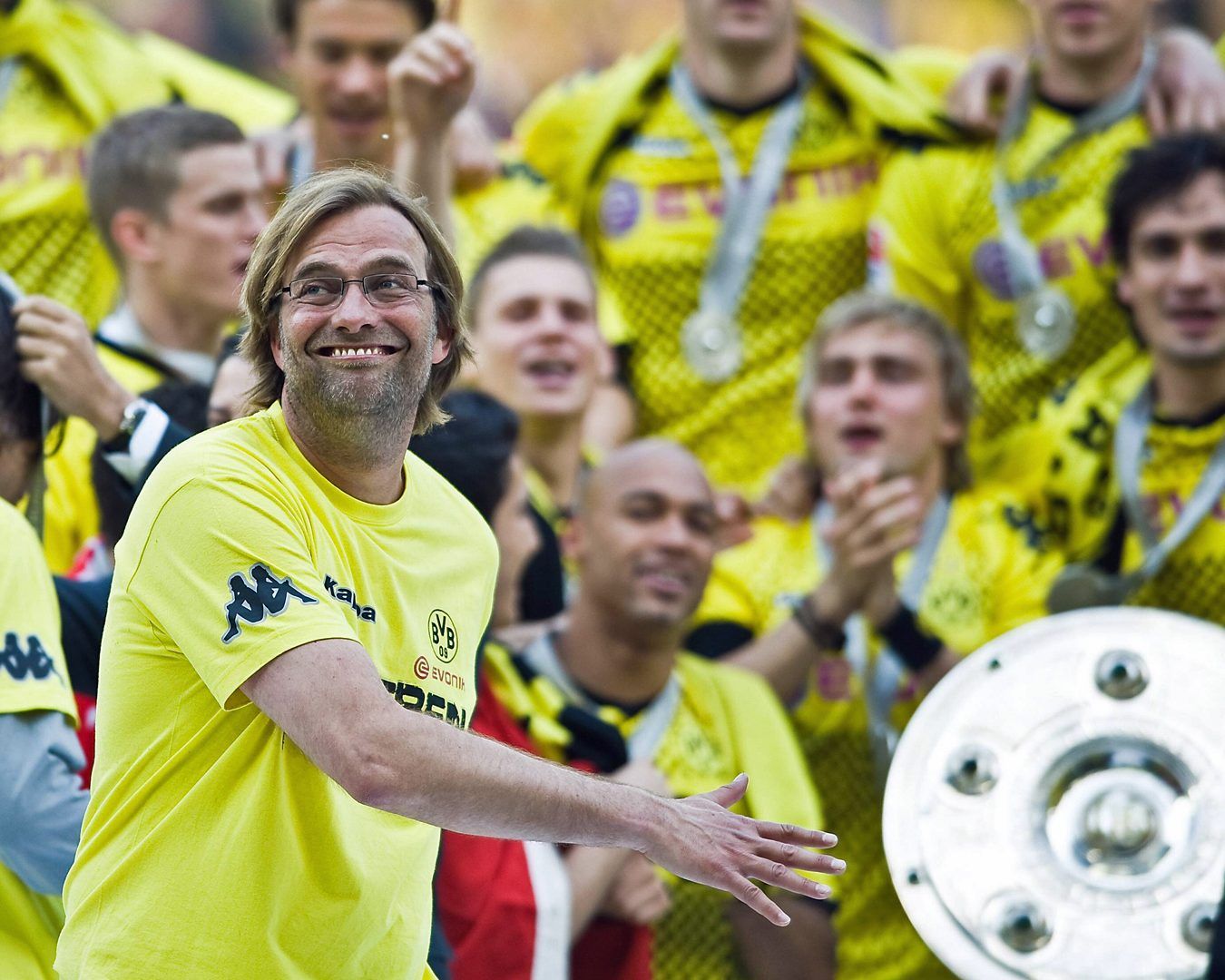
The club's run to the 2012-2013 UEFA Champions League final was a fairytale journey. Dortmund's dazzling attacking football captured the imagination of football fans worldwide. Their semifinal victory against the mighty Real Madrid, described as "galactic" at the time, remains etched in history. Though they narrowly lost in the final to Bayern Munich, their remarkable campaign was a testament to the magical touch Klopp had brought to the club. The following season, Dortmund's European adventure continued. They once again reached the Champions League quarter-finals, illustrating that their previous success was no fluke. Klopp's ability to extract the best from his squad and harness the power of the Yellow Wall was the driving force behind these achievements.
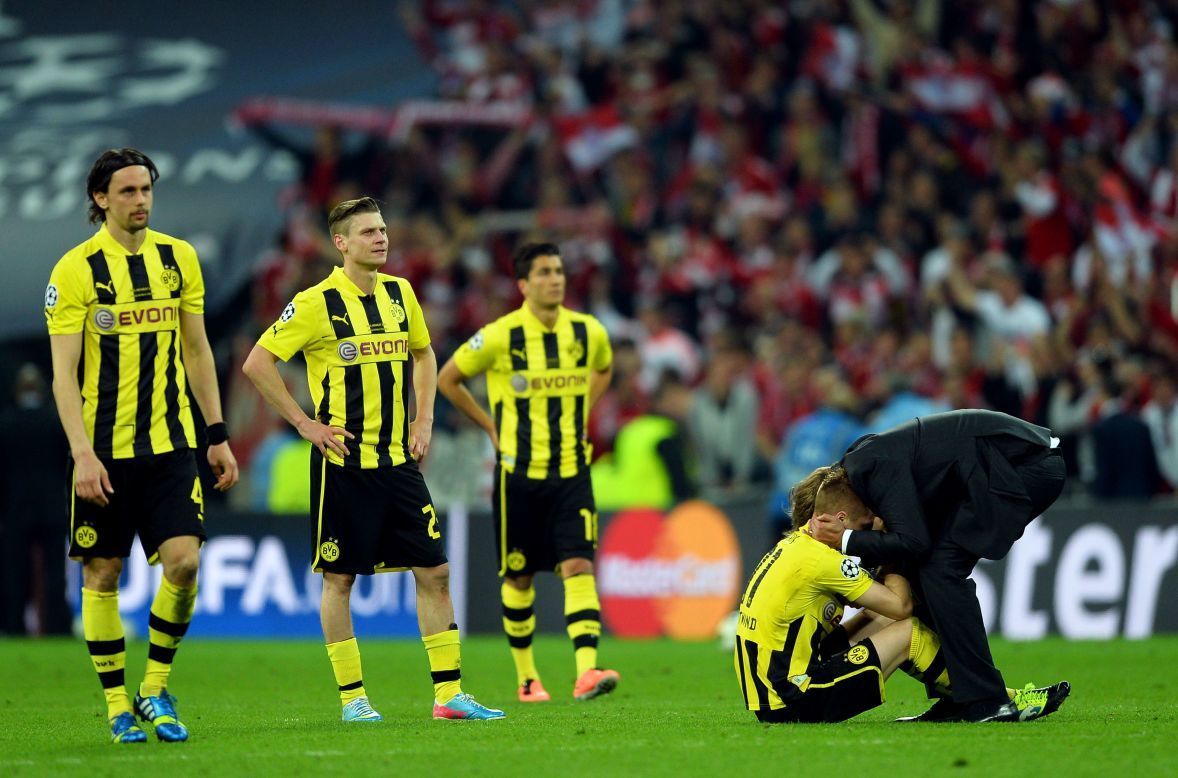
While the trophies were important, Klopp's impact extended beyond silverware. He fostered a sense of unity and camaraderie within the team that resonated with fans. The bond between Klopp, the players, and the supporters was a defining characteristic of his era. The emotional scenes of Klopp acknowledging the Yellow Wall after matches became iconic moments in football history. Klopp's departure in 2015 marked the end of an extraordinary chapter, but his legacy continued. The players he developed, like Pierre-Emerick Aubameyang and Mats Hummels, would go on to achieve greatness elsewhere. His brand of football had left an indelible mark on Borussia Dortmund and the wider footballing world.
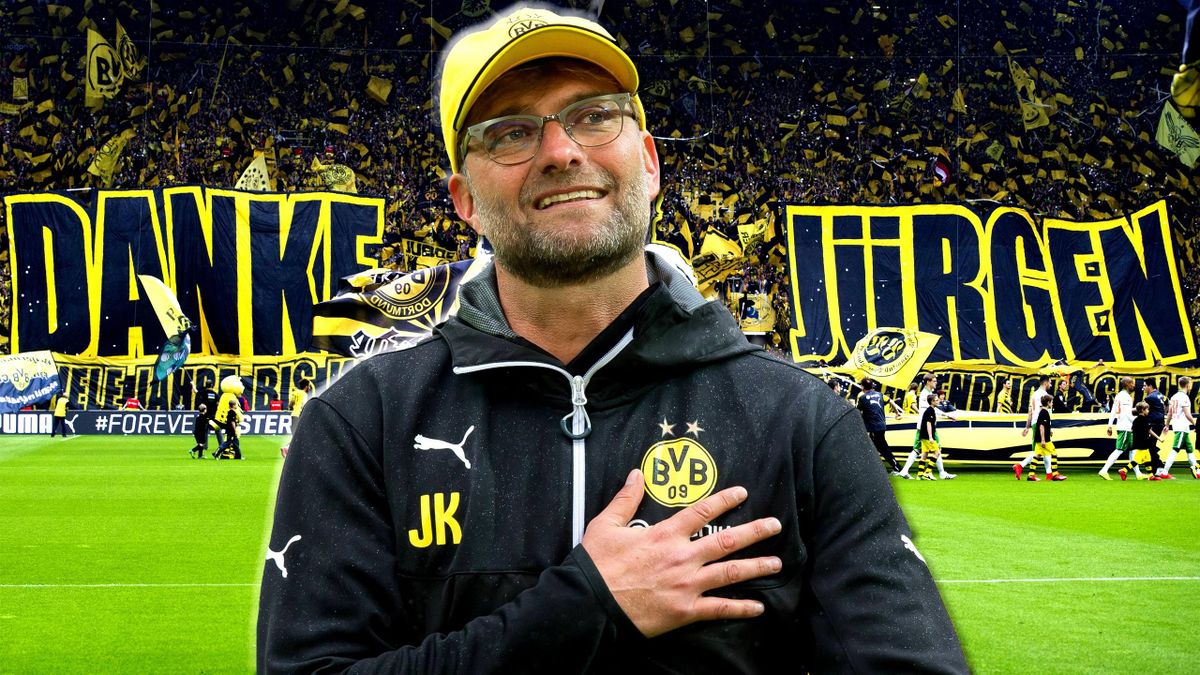
In retrospect, Klopp's era was a golden period for Borussia Dortmund. It was a time when the Yellow Wall truly roared, when the club's attacking verve and relentless work ethic captured the hearts of fans worldwide. While the trophies were celebrated, it was the spirit, the unity, and the style of play that defined this era. Klopp's legacy endures as an embodiment of the Yellow Wall's unwavering passion and the club's relentless pursuit of excellence.
VI. Local Rivalries
Borussia Dortmund, one of Germany's most successful and beloved football clubs, has several intense rivalries that add drama and excitement to the footballing landscape. Here are some of the key rivalries involving Borussia Dortmund:
- Schalke 04 (Revierderby): The Revierderby is one of the fiercest rivalries in German football and perhaps the most famous for Borussia Dortmund. Matches against Schalke 04 are always highly charged, with both sets of fans eagerly anticipating the clash. The rivalry is not only about football but also represents the cultural and industrial divide between the Ruhr region, where both clubs are located.
- Bayern Munich (Der Klassiker): The rivalry between Borussia Dortmund and Bayern Munich, known as "Der Klassiker," has grown in intensity over the years. These two clubs have often been the top contenders for the Bundesliga title, leading to high-stakes encounters that capture the attention of football fans worldwide.
- Borussia Mönchengladbach: This rivalry, known as the "Borussen-Derby," stems from the fact that both clubs have "Borussia" in their names. While not as intense as some other rivalries, matches between Borussia Dortmund and Borussia Mönchengladbach are always competitive and eagerly anticipated by fans.
- Hamburger SV: Although not a local derby, matches between Borussia Dortmund and Hamburger SV have produced some memorable encounters. These two clubs have a history of competing for titles in German football.
While the Revierderby with Schalke 04 is the most famous rivalry, Borussia Dortmund also has a competitive rivalry with other clubs in the Ruhr region, including VfL Bochum and Bayer Leverkusen. These rivalries contribute to the rich tapestry of German football and add extra motivation for Borussia Dortmund to perform at their best. The intense matches and passionate fan bases make these fixtures must-watch events on the football calendar.
VII. Developing Tomorrow's Stars
Borussia Dortmund's commitment to youth development stands as a shining example in the world of football. It's a testament to the club's ethos and long-term vision. The commitment to nurturing young talent has not only solidified Dortmund's position as one of Europe's elite clubs but has also helped maintain their unique identity. The club's youth academy, famously known as the "BVB-Nachwuchsleistungszentrum," is a bustling hub of activity where young talents are meticulously groomed for the big stage.
Here's a look at some of the young talents who were nurtured by the club:
- Mario Götze: Mario Götze is one of the most famous products of Dortmund's youth academy. He made his Bundesliga debut for Dortmund in 2009 at a young age and played a pivotal role in their success during the Jurgen Klopp era. His performances earned him a move to Bayern Munich before returning to Dortmund.
- Marco Reus: While not originally from Dortmund's youth academy, Marco Reus joined the club during his formative years. He has become an iconic figure at the club and a key player for both Dortmund and the German national team.
- Roman Weidenfeller: Roman Weidenfeller was a stalwart in goal for Borussia Dortmund for many years. He came through the club's youth system and had a long and successful career.
- Shinji Kagawa: The Japanese attacking midfielder Shinji Kagawa was a key player for Borussia Dortmund during his time at the club. He joined Dortmund from Cerezo Osaka and played a crucial role in their success.
- Sven and Lars Bender: The Bender twins, Sven and Lars, both started their careers in Borussia Dortmund's youth setup. They went on to have successful careers in the Bundesliga, with Sven primarily at Dortmund and Lars at Bayer Leverkusen.
- Mats Hummels: While Mats Hummels didn't start his career at Dortmund, he developed into one of Europe's top center-backs during his time at the club. He later returned to Dortmund after a stint at Bayern Munich.
- Ilkay Gündogan: The German midfielder Ilkay Gündogan joined Dortmund from 1. FC Nürnberg and played a key role in their midfield before moving to Manchester City.
- Nuri Şahin: Nuri Şahin, a Turkish midfielder, came through Dortmund's youth system and made his Bundesliga debut for the club at the age of 16. He later became the youngest scorer in Bundesliga history at that time.
- Robert Lewandowski: Robert joined Borussia Dortmund in 2021 from Polish club Lech Poznan. Perhaps his most memorable moment at Dortmund was scoring four goals against Real Madrid in the UEFA Champions League semi-final in 2013.
- Pierre-Emerick Aubameyang: The Gabonese striker Pierre-Emerick Aubameyang joined Borussia Dortmund from Saint-Étienne and became one of the Bundesliga's top goal-scorers during his tenure.
- Christian Pulisic: Although he's currently with Chelsea, Christian Pulisic made his professional debut for Borussia Dortmund. The American winger joined Dortmund's academy as a youth player and made significant contributions to the first team before moving to the Premier League.
- Youssoufa Moukoko: Youssoufa Moukoko, a German-Cameroonian forward, made headlines when he made his debut for Borussia Dortmund's first team at just 16 years old in 2020. He is considered one of the most promising young talents in the world.
- Dan-Axel Zagadou: The French defender Dan-Axel Zagadou joined Borussia Dortmund's youth system in 2017 and progressed to the first team. He has been a valuable addition to the squad's defense.
- Jacob Bruun Larsen: Jacob Bruun Larsen, a Danish winger, progressed through Dortmund's youth ranks and made appearances for the first team before moving on to other clubs.
- Giovanni Reyna: Giovanni Reyna, an American attacking midfielder, joined Dortmund's youth academy in 2019. He made his first-team debut shortly afterward and has continued to impress with his skill and creativity.
- Jadon Sancho: Jadon Sancho, an English winger, joined Borussia Dortmund from Manchester City's youth academy in 2017. He rapidly developed into one of the best young talents in Europe during his time at Dortmund, and his performances earned him a high-profile move to Manchester United.
- Erling Haaland: Erling Haaland, the Norwegian sensation, signed for Borussia Dortmund in January 2020 from RB Salzburg. His incredible goal-scoring record and physical prowess quickly made him a fan favorite. Haaland has been a revelation and one of Europe's top strikers.
- Jude Bellingham: Jude Bellingham, an English midfielder, joined Dortmund from Birmingham City in 2020 as a highly touted young prospect. He quickly adapted to the Bundesliga and has become a key player in Dortmund's midfield.
These players represent just a fraction of the young talent that Borussia Dortmund has developed over the years, underscoring the club's reputation as a breeding ground for future football stars. Dortmund's commitment to youth is not just about player development; it's also about creating a culture of opportunity. The club consistently provides opportunities for these young players to make the transition to the first team. The electric atmosphere at Signal Iduna Park serves as both a crucible for their growth and a testament to the faith the club places in its young talents.
In an era where big transfers often dominate football news, Borussia Dortmund's focus on youth development is a refreshing reminder of the sport's roots. It's a commitment that not only ensures success on the pitch but also cements the club's place in the hearts of fans worldwide. As they continue to produce tomorrow's stars, Borussia Dortmund's commitment to youth development remains an integral part of their enduring legacy.
VIII. Challenges and Triumphs
Borussia Dortmund's journey has been marked by both challenges and triumphs, making their story all the more compelling.
Challenges
- Financial Struggles (Early 2000s): One of the most significant challenges came in the early 2000s when the club faced severe financial difficulties. This period culminated in Dortmund being on the brink of bankruptcy in 2005. The financial crisis led to the departure of several key players, including Tomas Rosicky and Jan Koller and involved even a loan from their rival club, Bayern Munich to survive. It took several years for the club to recover financially and regain stability.
- Player Exodus (After Successes): After achieving Bundesliga titles and a UEFA Champions League victory in 1997, Borussia Dortmund struggled to keep their top talent. Stars like Matthias Sammer, Andreas Möller, and Karl-Heinz Riedle left the club. The exodus of key players following these triumphs made it challenging to maintain the same level of success.
- Injury Woes: Borussia Dortmund has had its fair share of injury setbacks, particularly with some of its star players. Marco Reus, a beloved figure at the club, has faced recurring injuries throughout his career. Mario Götze, another Dortmund icon, also struggled with health issues. These injuries have at times limited the contributions of key players and tested the team's depth and resilience.
- Managerial Changes: Frequent changes in managerial positions can disrupt a team's stability. Borussia Dortmund has seen several coaching changes over the years, each bringing its own set of challenges and adjustments for the players.
Triumphs
- Bundesliga Titles: Borussia Dortmund has won the Bundesliga, Germany's top-tier football league, on multiple occasions. Some of their notable Bundesliga triumphs include the titles they secured in the 1994-95, 1995-96, 2010-11 and 2011-12 seasons. The last two victories under the management of Jürgen Klopp were particularly remarkable, as the team set numerous records for goals scored and points earned.
- DFB-Pokal Success: The club has achieved success in the DFB-Pokal, the premier domestic cup competition in Germany. Dortmund has clinched the DFB-Pokal multiple times, with memorable victories in 1988, 1989, 2012, and 2017. The 2012 win, which was part of their domestic double, was especially noteworthy.
- DFL-Supercup Titles: Dortmund has also performed well in the DFL-Supercup, Germany's annual football competition. They have won this title multiple times, underscoring their domestic dominance.
- UEFA Champions League Victory: Borussia Dortmund triumphed in the 1996-97 UEFA Champions League season. Under the leadership of coach Ottmar Hitzfeld, they defeated Juventus in the final, securing their place in football history. This remains one of the club's most prestigious achievements.
- UEFA Cup Winners' Cup: In the 1965-66 season, Borussia Dortmund won the UEFA Cup Winners' Cup, which is now known as the UEFA Europa League. This was a significant European triumph for the club.
- Intercontinental Cup: After the victory in the 1996-97 UEFA Champions League, Borussia participated to the International Cup, which they won against Cruzeiro, at the Tokyo National Stadium
The challenges Dortmund has faced have only served to make their triumphs more remarkable. They continue to be a formidable force in both domestic and international football, and their story of perseverance and success remains an inspiring one for football fans worldwide.
IX. The Yellow Wall: Fan Culture
The Yellow Wall, or "Die Gelbe Wand" in German, is the beating heart of Borussia Dortmund's passionate fan culture. This immense terrace in the club's Signal Iduna Park stadium is renowned for its electric atmosphere, unwavering support, and iconic traditions. Stretching across the southern stand of the stadium, the Yellow Wall accommodates over 25,000 fans on matchdays, making it the largest terrace for standing spectators in European football. This sea of fans clad in the club's iconic yellow and black colors creates an awe-inspiring spectacle.
The Dortmund faithful are known for their passionate chants and songs that reverberate throughout the stadium. The iconic "You'll Never Walk Alone" rendition, inspired by Liverpool FC, is a spine-tingling pre-match ritual that showcases the unity and devotion of the fans. This tradition exemplifies the emotional connection between Borussia Dortmund and its supporters. Tifos, or large choreographed displays, are another hallmark of Borussia Dortmund's fan culture. These intricate and visually stunning displays often convey messages of support, motivation, or pay tribute to club legends. They add an extra layer of spectacle to the stadium atmosphere.
Furthermore, the fans' commitment to their team extends beyond the stadium. Dortmund supporters are actively engaged in the community and various social initiatives. They work tirelessly to promote inclusivity, diversity, and fair play in football. The Yellow Wall's unwavering support has inspired the team to achieve great heights. It's a source of motivation for players, creating a true home advantage. The intimate bond between the fans and the club is a testament to Borussia Dortmund's unique identity and the importance of fan culture in football.
X. Conclusion
In conclusion, Borussia Dortmund's journey from its humble beginnings to its status as one of Europe's most exciting and admired football clubs has been a remarkable one. The triumphs and challenges faced along the way have shaped its identity and enriched the footballing world.
At the heart of this extraordinary journey stands "The Yellow Wall," a symbol of unwavering support and undying passion. Borussia Dortmund's incredible fan culture, showcased by this immense terrace, has not only created an electrifying atmosphere in the Signal Iduna Park but also set a benchmark for the world of football fandom. "The Yellow Wall" is more than just a group of supporters; it's a living testament to the power of passion and community in football. Its enduring legacy continues to inspire not only Dortmund but the entire footballing fraternity.
Through periods of adversity, financial struggles, and setbacks, Dortmund's indomitable spirit has shone brightly. Their commitment to youth development has produced a steady stream of talented players who have not only excelled on the pitch but also embodied the club's values. Triumphs, both domestically and in international competitions, have cemented Borussia Dortmund's place in football history. Their thrilling style of play, nurtured under visionary coaches, has won them admirers worldwide.
In the end, Borussia Dortmund's story is one of perseverance, innovation, and devotion. As "The Yellow Wall" continues to stand tall, it ensures that the legacy of this remarkable club will endure for generations to come.
